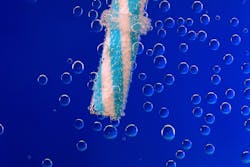Research Finds Wastewater Treatment Plants Related to Microplastic Pollution
A new study, published in the journal Environmental Science and Pollution Research, found that wastewater treatment plants may contribute to microplastic pollution in waterways. The research, which involved measuring the amount of microplastics present in waterways near wastewater treatment plants, concluded that plants are not effective at filtering microplastics and that sewage sludge is a contributing factor to increasing plastic pollution.
The study measured microplastics present up- and downstream of six wastewater treatment plants in different catchments with varying characteristics and concluded that all measured plants led to an increase in microplastics in waterways. However, the data found other sources of microplastics contributed to the pollution, including atmospheric deposition, agricultural land sewage sludge was applied to and release of secondary microplastics following the breakdown of larger plastics.
“The fact that the quantity of microplastics present in receiving waters was greater downstream of each of the six wastewater treatment plants studied confirms that treated sewage effluent is a key source of microplastics,” the authors stated.
The composition of microplastics discovered was mainly fragment and fibers with relatively few pellets and beads, the authors said. They recommend efforts to reduce microplastic concentrations in waterways should focus on a wide range of sources.
